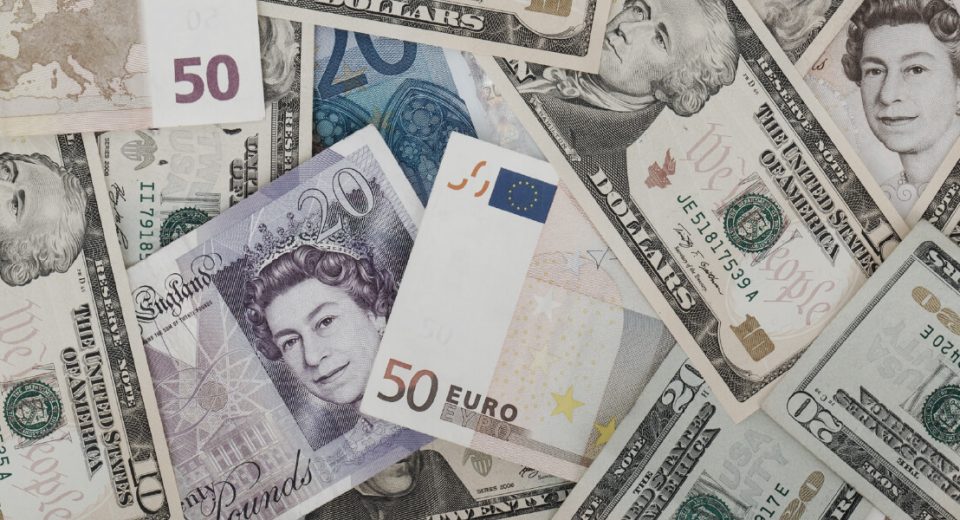Will Oil Prices Continue To Rise in 2023?

Oil prices peaked at $119.62 in March 2022, only to plunge to $71.053 per barrel in the first week of December. Despite such price fluctuations, the oil and gas industry has managed to earn record profits this year. It has also accumulated cash flows to fund the 2023 strategy. Recognising the global macroeconomic uncertainty, the O&G industry aims to secure the supply in the short term while working on transitioning to clean energy in the long term.
Oil Forecasts for 2023
In its Energy Outlook 2023 report, the Economist Intelligence Unit expects energy consumption to grow by a mere 1.3% in 2023, due to rising inflation and the slowing global economy. The World Bank, on the other hand, has projected that energy prices could decline by 11% in 2023, following the 60% surge in 2022. The World Bank also predicts that crude oil price could average at $92 per barrel in 2023, further easing to $80 per barrel in 2024.
It suggested that large emerging markets and developing economies could impact the flow of oil from Russia under the proposed Group of Seven oil price cap. Here’s a look at some of the other factors expected to give direction to oil prices in 2023.
OPEC’s Oil Strategy
After oil prices dropped in November 2022, the OPEC announced a production cut of 2 million barrels per day (bpd), which amounts to about a 2% cut in the global supply. As the year is about to end, the reduced production is likely to show its effects only in 2023, although oil prices have already started to move up in December. If the OPEC continues to restrict supply, oil prices will climb due to an increase in energy demand as the weather gets colder.
The Global Inventory
As soon as Russia’s oil supply faced sanctions, following its ongoing invasion of Ukraine, global oil prices shot up. US refineries took this as an opportunity to accelerate oil production. The prolonged Russia-Ukraine has adversely impacted the EU economy and disrupted the supply of numerous commodities across Europe, including oil.
As per the EIA report, the global oil inventory may decline by 0.2 million barrels per day in the first half of 2023. But the year is expected to end with higher inventories, with a forecast of reserves rising by about 0.7 million barrels per day.
Oil prices move up each time inventories start drawing from reserves, as a result of reduced global crude oil supply. So, as typically happens, when inventories start piling up, oil prices dampen.
Global Refinery Utilisation
The US, Russia and Saudi Arabia are the three major players in the crude oil production industry. With Russian supply to the EU being cut due to the sanctions, the other two nations are busy expanding their markets. This could lead Europe to continue to experience supply and price uncertainty.
The EIA forecast suggests that US refinery utilisation will continue at around the 5-year average in 2023. However, the combination of maximising refinery output and a contraction in the US economy, due to the Fed’s stance on interest rates, could reduce distillate prices in the first half of the year. The report also suggests a decline of 19% in diesel refining margins in 2023 as compared to 2022.
Colder Winters
In 2022, the global mean temperature rose about 1.15oC above the pre-industrial average. This made 2022 only the 5th or 6th warmest year. However, rare triple-dip cooling in La Niña has affected winter temperatures adversely. As a result of the surface of the Pacific becoming continuously colder, the winters across the globe are turning harsher even during the shorter durations they’ve been experiencing recently. Lower temperatures mean higher demand for heating fuel in the first and last quarters of every year. As a result, oil prices are expected to climb entering 2023.
Progress in Renewable Energy
Aggressive initiatives to achieve net zero emissions by 2050 are in place across the world. In sync with that, the global renewable energy market is expected to be valued at $1,129.74 billion by 2027. Additionally, by 2024, 33% of the world’s global electricity supply is forecasted to be generated from renewables.
As the dependency on fossil fuels declines and clean energy use takes over, oil demand will decrease and dampen oil prices over time. However, extreme weather conditions may slow down the green energy transition.
Fed Interest Rate Hikes
The Federal Reserve has announced a reduction in interest rate hikes as it can tame inflation through the 6 continuous hikes. This is expected to put downward pressure on the US dollar. As commodities are valued in the dollar, oil prices per barrel too may experience a decline.
Decline in Global Growth
Demand for energy is directly correlated with global growth. The Federal Reserve has revised its growth expectations downwards from 4.0% per year in 2021 to 1.0% per year 2023. In addition, the IMF forecast suggests 2.7% growth in 2023, a steep cut from the 4.4% per year growth predicted for 2022. Oil prices are expected to witness downward pressure due to slowing growth.
How to Trade Oil in 2023
Markets are uncertain and will remain so in 2023. The good news for traders is volatility brings multiple trading opportunities. However, remember that volatility also means higher risk, so putting risk management measures in place becomes crucial for every trade in uncertain markets.
One way to make the most of market volatility is to trade commodities via CFDs, which allow you to speculate in both rising and falling markets without having to own the underlying asset. Note that CFDs are leveraged products, which enhance market exposure. This means both profit and loss potential can be magnified. Experts advise you to risk only as much as you can afford to lose. In addition, trading stocks and indices that give exposure to the O&G industry could be another way to gain exposure to oil in 2023.
To Sum It Up
- Renewable energy growth will directly impact oil demand
- Global inventories are expected to decline, leading to higher oil prices
- Fed rate hikes could pull the US dollar down, which could put downward pressure on oil prices
- OPEC output cuts are expected to exert upward pressure on oil prices
- Trading CFDs can help you to take advantage of rising and falling oil prices




